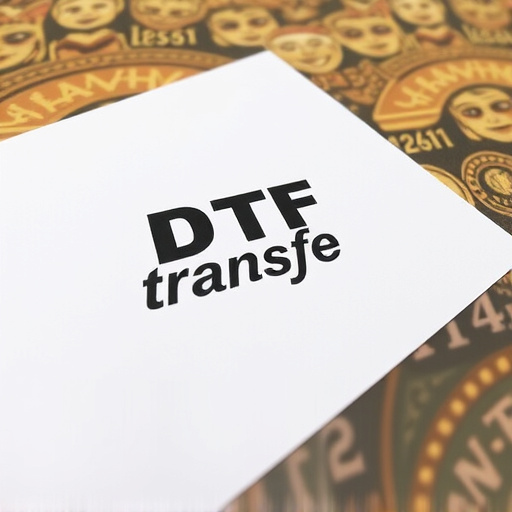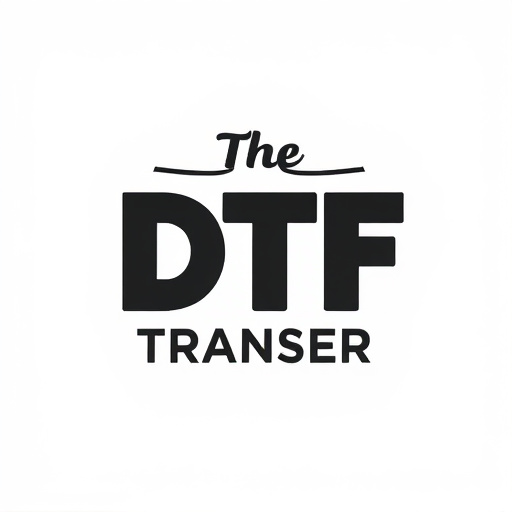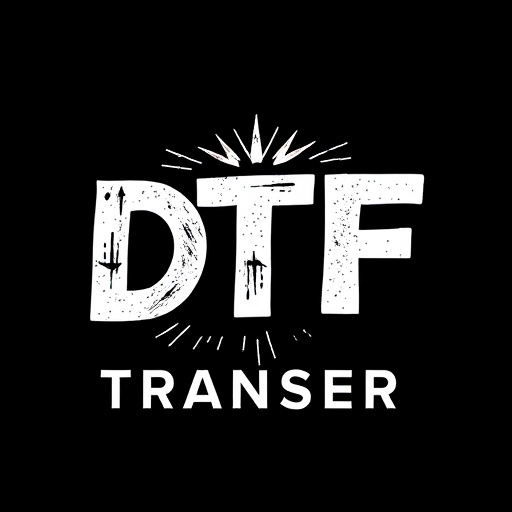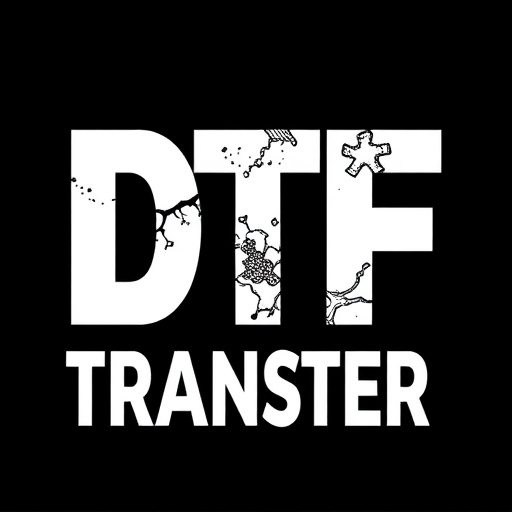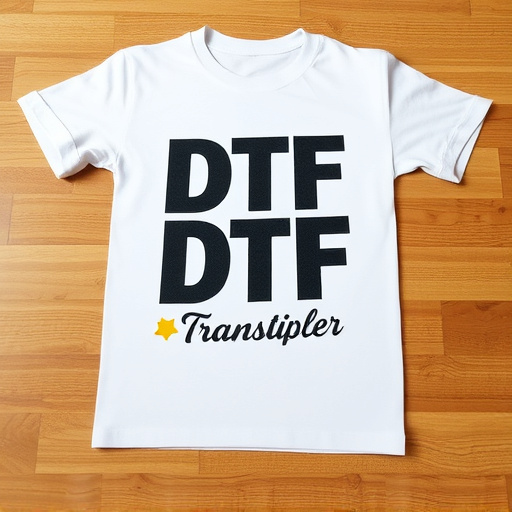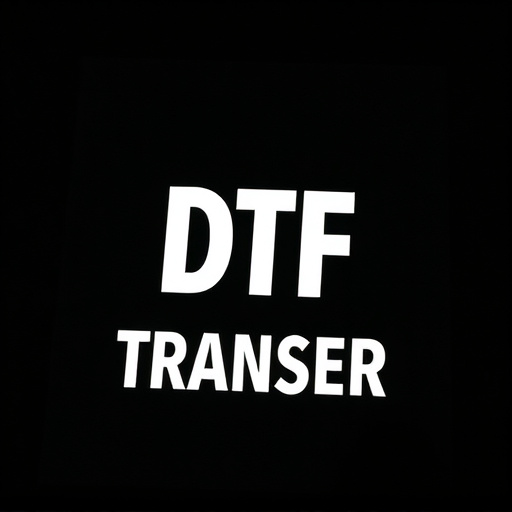Direct-to-Film (DTF) transfers are transforming printing with precise digital-to-physical conversions on diverse surfaces. Using advanced polymer materials and specialized inks, DTF offers speed, versatility, and high-resolution prints suitable for fashion, advertising, and signmaking. This innovative process eliminates intermediate steps, streamlines production, and enhances durability, making it a game-changer in multiple industries with endless creative possibilities. Choosing the right substrate is crucial for optimal results, while future developments promise even better quality, speed, and integration of AI for on-demand, high-quality custom DTF prints.
Direct-to-film (DTF) transfers are transforming industries by offering a swift and versatile printing method. This innovative process involves special materials that act as a bridge between ink and film, enabling precise and high-quality prints. In this article, we explore the intricacies of DTF transfers, from understanding the technology to highlighting its benefits across diverse sectors. Discover how special materials and inks are revolutionizing printing, ensuring long-lasting and visually stunning results.
- Understanding Direct-to-Film (DTF) Transfers: A Brief Overview
- The Role of Special Materials in DTF Printing Process
- How Special Ink Holds Up Against Traditional Printing Methods
- Benefits and Applications of DTF Prints for Various Industries
- Choosing the Right Material for Optimal DTF Transfer Quality
- Future Trends: Innovations in DTF Transfer Technology
Understanding Direct-to-Film (DTF) Transfers: A Brief Overview

Direct-to-Film (DTF) Transfers represent a cutting-edge technique in printing and imaging, offering unparalleled precision and quality for transferring art, graphics, and text onto various surfaces directly from digital files. This innovative process eliminates the need for intermediate steps like printing on paper or vinyl, streamlining the production of final outputs significantly.
In a DTF Transfer, special materials—often derived from advanced polymers—act as both carrier and ink-receptive medium. These materials are precisely coated to hold and then transfer the desired image, ensuring sharp details and vibrant colors. DTF Printing is especially popular in signmaking, vehicle graphics, and custom apparel printing due to its speed, versatility, and ability to produce high-resolution DTF prints suitable for diverse substrates like metal, plastic, and glass.
The Role of Special Materials in DTF Printing Process

Special materials play a pivotal role in the Direct-to-Film (DTF) transfer printing process, revolutionizing the way we create prints on various surfaces. These advanced materials are specifically designed to hold and transfer ink effectively, ensuring high-quality outcomes. In the DTF Printing process, a unique combination of ink and a special carrier sheet is used, allowing for precise control over the ink application.
The key advantage lies in their ability to withstand the heat and pressure involved in the transfer process while maintaining the integrity of the printed design. These materials are carefully engineered to adhere to diverse substrates, from fabrics to metals, enabling versatile printing options. By facilitating accurate ink deposition, special materials contribute to the overall precision and efficiency of DTF transfers, making them a game-changer for various industries, including fashion, advertising, and signmaking.
How Special Ink Holds Up Against Traditional Printing Methods

Special ink designed for direct-to-film (DTF) transfers offers a unique advantage over traditional printing methods. Unlike conventional inks that rely on complex processes and presses, DTF ink is specifically formulated to adhere directly to film or other materials used in the transfer process. This simplicity results in exceptional durability and precision, ensuring that intricate designs and vibrant colors are accurately reproduced in DTF prints.
The innovation in DTF ink lies in its ability to withstand various environmental factors without compromising quality. Unlike traditional printing methods that may fade over time or under harsh lighting conditions, DTF ink is engineered to remain vivid and long-lasting. This makes DTF transfers ideal for applications requiring outdoor exposure or prolonged visibility, from promotional banners to custom artwork on textiles.
Benefits and Applications of DTF Prints for Various Industries

Direct-to-film (DTF) transfers offer a range of benefits that have made them increasingly popular across various industries. One of the key advantages is their ability to achieve high-quality, durable prints on a wide variety of materials, from vinyl and fabric to wood and metal. This versatility allows for endless creative possibilities, enabling businesses to transform plain surfaces into eye-catching displays.
DTF printing is particularly valuable in sectors like signage, advertising, fashion, and even art restoration. In the retail sector, DTF prints can be used to create dynamic window displays and eye-catching posters that grab attention and enhance brand visibility. Fashion designers can effortlessly print unique patterns and designs on clothing and accessories, while artists can restore historical pieces with intricate detail and accuracy. Moreover, DTF technology streamlines production processes by allowing for quick turnarounds and custom designs, making it an efficient solution for time-sensitive projects.
Choosing the Right Material for Optimal DTF Transfer Quality
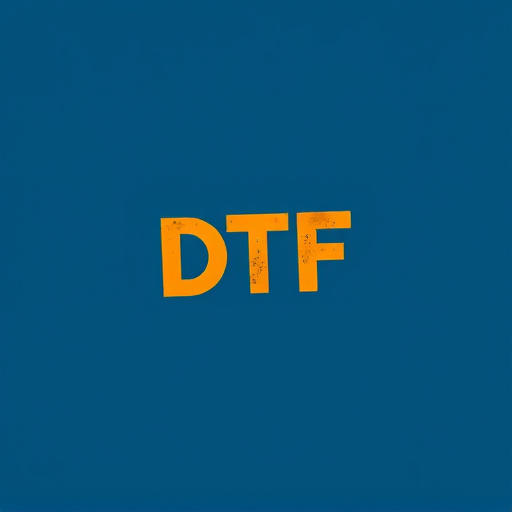
Choosing the right material is a crucial step in achieving high-quality DTF (Direct-to-Film) transfer results. The ideal substrate for DTF printing should possess unique properties that ensure optimal ink adhesion and consistent print accuracy. Look for materials designed specifically for DTF applications, as these will offer the best compatibility with the ink and provide a smooth surface for printing.
Factors to consider include ink absorption rate, surface roughness, and flexibility. Absorbent materials may cause ink to smear or dry unevenly, while too rough a surface can lead to print distortion. A balanced material with a subtle texture allows for precise ink placement and ensures crisp, clear DTF prints every time.
Future Trends: Innovations in DTF Transfer Technology
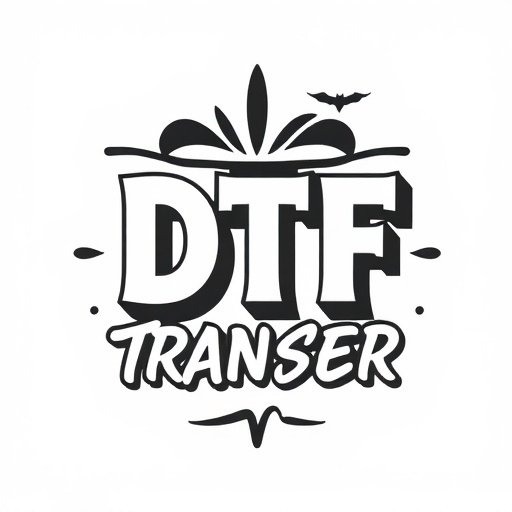
The future of direct-to-film (DTF) transfer technology looks promising, with continuous innovations pushing the boundaries of what’s possible. Researchers and developers are exploring new materials that can enhance the quality and speed of DTF prints. For instance, advancements in ink composition and application methods are leading to more vibrant and detailed DTF prints, opening up exciting opportunities for various industries, from fashion to signage.
Additionally, the integration of digital technologies like artificial intelligence (AI) and machine learning is expected to streamline the DTF transfer process, making it even more efficient and accessible. These trends suggest a future where DTF printing becomes a go-to solution for on-demand, high-quality custom prints, revolutionizing how businesses and individuals create and share their unique designs.



